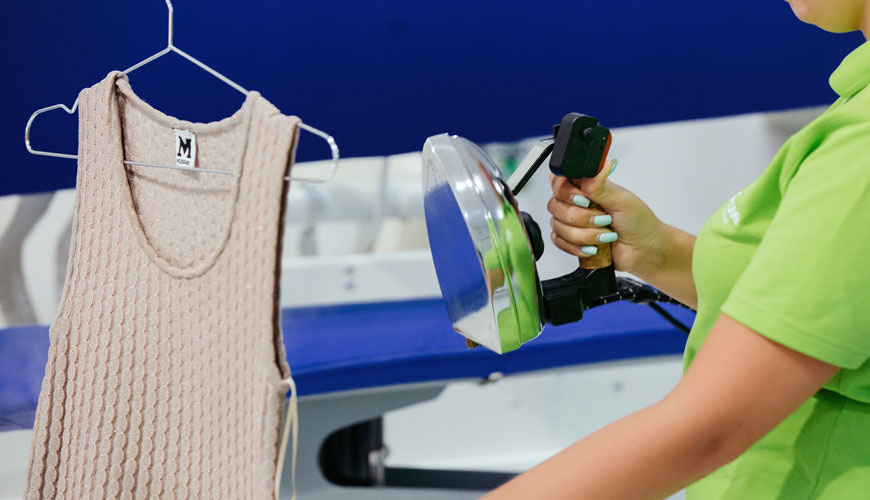

The ISO 3175 standard, published by the International Standards Organization (ISO), consists of the following sub-standards under the main heading of "Textiles - Professional care, dry cleaning and wet cleaning of fabrics and clothing":

The ISO 3175-1 standard describes a method for evaluating textile products tested according to ISO 3175‑2 and ISO 3175‑4. In this method, changing fabric and clothing properties in dry cleaning or wet cleaning and finishing processes are determined and methods for evaluating the change are explained using existing international standards. Other products, which are also important but for which there are no international standards providing assessment methods, are included in the appendix to the standard, along with recommendations on how to proceed with their assessment.
For the purposes of this standard,
The ISO 3175-2 standard describes dry cleaning procedures for tetrachloroethene (perchlorethylene) using commercial dry cleaning machines for fabrics and clothing. This standard contains procedures for normal and sensitive materials. Local staining and stain removal are beyond the scope of this standard.
For the purposes of this standard,
The ISO 3175-3 standard describes dry cleaning procedures for hydrocarbon solvents using commercial dry cleaning machines for fabrics and clothing. This standard contains procedures for normal and sensitive materials. Localized staining and stain removal are outside the scope of this standard.
The ISO 3175-4 standard describes simulated professional wet cleaning procedures for fabrics and garments using a reference machine. This standard is designed for non-washable fabrics and garments that require professional finishing. It includes a normal treatment for normal materials, a light treatment for sensitive materials, and a very light treatment for very delicate materials. Local staining and stain removal is beyond the scope of this document.
For the purposes of this standard,
The ISO 3175-5 standard describes dry cleaning procedures for dibutoxymethane using commercial dry cleaning machines for fabrics and clothing. This standard contains procedures for normal and sensitive materials.
The ISO 3175-6 standard describes dry cleaning procedures for decamethylpentacyclosiloxane using commercial dry cleaning machines for fabrics and clothing. This standard contains procedures for normal and sensitive materials.
Dry cleaning is the process of cleaning textiles in an organic solvent that dissolves oils and fats and largely disperses particulate dirt without the swelling and wrinkling associated with washing or wet cleaning. A small amount of water can be added to the solvent with the help of a detergent to achieve better dirt and stain removal. Some moisture sensitive products are dry cleaned preferably without adding water to the solvent. A detergent is often used to aid in soil removal and reduce the risk of greying, but it should be borne in mind that detergents contain varying amounts of water in their formulation.
Dry cleaning is normally followed by an appropriate restorative finishing procedure. In most cases this involves some form of steam treatment or hot pressing.
Among the numerous test, measurement, analysis and evaluation studies it provides for businesses in various sectors, our organization also provides testing services for professional care, dry cleaning and wet cleaning of fabrics and clothing, within the scope of ISO 3175 standard, with its trained and expert staff and advanced technological equipment. .
To get an appointment, to get more detailed information or to request an evaluation, you can ask us to fill in our form and reach you.